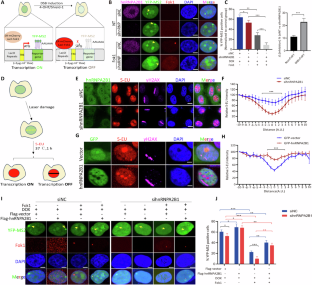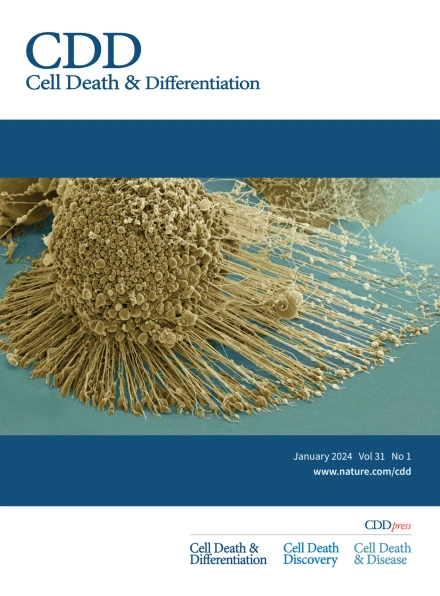hnRNPA2B1 deacetylation by SIRT6 restrains local transcription and safeguards genome stability
IF 13.7
1区 生物学
Q1 BIOCHEMISTRY & MOLECULAR BIOLOGY
引用次数: 0
Abstract
Repair of double strand breaks (DSBs) by RNA-binding proteins (RBPs) is vital for ensuring genome integrity. DSB repair is accompanied by local transcriptional repression in the vicinity of transcriptionally active genes, but the mechanism by which RBPs regulate transcriptional regulation is unclear. Here, we demonstrated that RBP hnRNPA2B1 functions as a RNA polymerase-associated factor that stabilizes the transcription complex under physiological conditions. Following a DSB, hnRNPA2B1 is released from damaged chromatin, reducing the efficiency of RNAPII complex assembly, leading to local transcriptional repression. Mechanistically, SIRT6 deacetylates hnRNPA2B1 at K113/173 residues, enforcing its rapid detachment from DSBs. This process disrupts the integrity of the RNAPII complex on active chromatin, which is a pre-requisite for transient but complete repression of local transcription. Functionally, the overexpression of an acetylation mimic stabilizes the transcription complex and facilitates the functioning of the transcription machinery. hnRNPA2B1 acetylation status was negatively correlated with SIRT6 expression, and acetylation mimic enhanced radio-sensitivity in vivo. Our findings demonstrate that hnRNPA2B1 is crucial for transcriptional repression. We have uncovered the missing link between DSB repair and transcriptional regulation in genome stability maintenance, highlighting the potential of hnRNPA2B1 as a therapeutic target.


SIRT6 对 hnRNPA2B1 的去乙酰化作用可抑制局部转录并保护基因组稳定性
RNA 结合蛋白(RBPs)对双链断裂(DSB)的修复对确保基因组完整性至关重要。DSB修复伴随着转录活跃基因附近的局部转录抑制,但RBP调节转录的机制尚不清楚。在这里,我们证明了 RBP hnRNPA2B1 在生理条件下作为 RNA 聚合酶相关因子稳定转录复合物的功能。DSB发生后,hnRNPA2B1从受损染色质中释放出来,降低了RNAPII复合物的组装效率,导致局部转录抑制。从机理上讲,SIRT6 会在 K113/173 残基上对 hnRNPA2B1 进行去乙酰化,从而使其快速脱离 DSB。这一过程破坏了活性染色质上 RNAPII 复合物的完整性,而这是瞬时但完全抑制局部转录的先决条件。hnRNPA2B1 的乙酰化状态与 SIRT6 的表达呈负相关,乙酰化模拟物增强了体内的放射敏感性。我们的研究结果表明,hnRNPA2B1 对转录抑制至关重要。我们发现了基因组稳定性维持过程中DSB修复和转录调控之间缺失的环节,凸显了hnRNPA2B1作为治疗靶点的潜力。
本文章由计算机程序翻译,如有差异,请以英文原文为准。
求助全文
约1分钟内获得全文
求助全文
来源期刊

Cell Death and Differentiation
生物-生化与分子生物学
CiteScore
24.70
自引率
1.60%
发文量
181
审稿时长
3 months
期刊介绍:
Mission, vision and values of Cell Death & Differentiation:
To devote itself to scientific excellence in the field of cell biology, molecular biology, and biochemistry of cell death and disease.
To provide a unified forum for scientists and clinical researchers
It is committed to the rapid publication of high quality original papers relating to these subjects, together with topical, usually solicited, reviews, meeting reports, editorial correspondence and occasional commentaries on controversial and scientifically informative issues.
 求助内容:
求助内容: 应助结果提醒方式:
应助结果提醒方式:


